News & Articles
Browse all content by date.
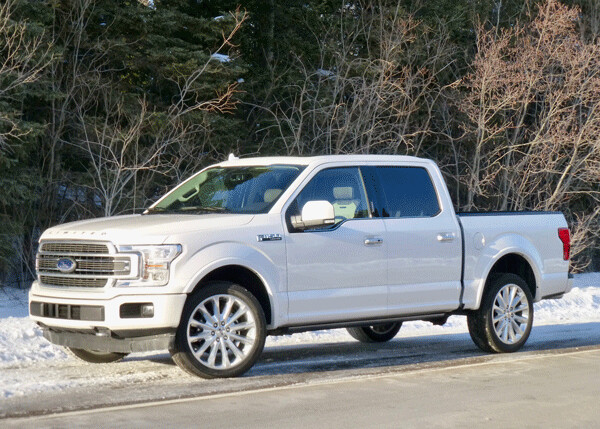
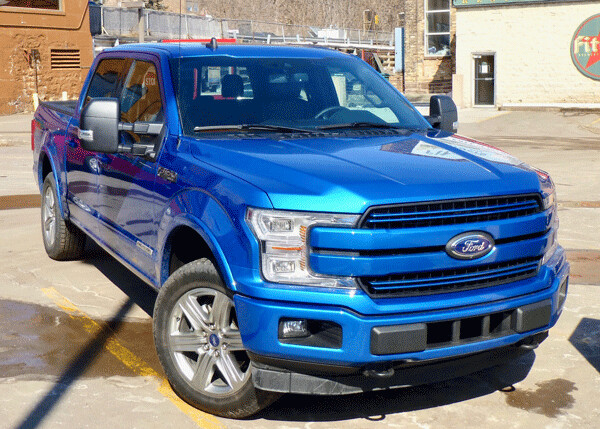
Pickup trucks to the left, pickup trucks to the right, pickup trucks right in front of you, pickup trucks right behind you. If you love pickup trucks, the big decision is to first decide what you need a pickup truck for, and then be prepared for a lengthy term of comparative drives to decide which one is right for you.
As if that is going to happen.
I’m all for such comparison drives, but in the U.S., most truck buyers are set in their minds that they want a Ford, or a Chevy, or a Ram, and it might take a newcomer to trucks to check out the Toyota Tundra or Nissan Titan, or the Honda Ridgeline. But basically, truck buyers go shopping with their minds already made up.
A Ford buyer, for example, will be objective in selecting his new truck — as long as it’s a Ford F-150, which has spent the last 40 years as the top-selling vehicle in the U.S., and therefore the world.
For 2019, however, even devoted Ford buyers will have some decision-making to do before choosing. I recently had the chance to spend a week driving a “2019 F-150 4x4 SuperCrew” pickup, which was loaded to the roofline with features, including Ford’s largest EcoBoost (turbocharged) engine, the 3.5-liter V6 with twin turbos and high-output figures of 450 horsepower and 510 foot-pounds of torque and a 10-speed automatic. It was a gleaming White Limited Metallic, and almost forgotten was the notation that it was the Limited version.
The price: $74,775.
A short time later, as i was mobilizing my thoughts and notes to write a review, another Ford F-150 showed up for my perusal. This one was a “2019 F-150 4x4 SuperCrew” pickup. Sound familiar? Well, the name is the same, but the similarities pretty much end there. The size and shape are identical, too, but the equipment is quite different, and it was the Lariat series.
This one came in Velocity Blue, which is a bright, penetrating blue color, so from here on we’ll differentiate the two as the white one or the blue one. The blue one was something of a breakthrough, because it housed a 3.0-liter Turbo-Diesel, built by Ford, and possessing an amazingly quiet power plant. Diesel clatter and the overall familiar noise made by traditional diesel engines is absolutely absent from this truck. It is the product of a house-built turbo-diesel built by Ford, for Ford. No more bought and paid for engines by Cummins, or International, or whomever.
The price: $68,100.
The 3.0 Turbo-Diesel is one of five engines Ford offers in its F-150s, and even it comes in two forms of power. The high-output test vehicle puts out 250 horsepower, which is OK, but it’s the least powerful of the five from a horsepower standpoint. But it also offers a whopping 440 foot-pounds of torque, which is greater than even the 5.0-liter V8 gas engine. Only the high-output 3.5 Twin Turbo delivers more torque — the powertrain I had just returned in the first F-150, the White one.
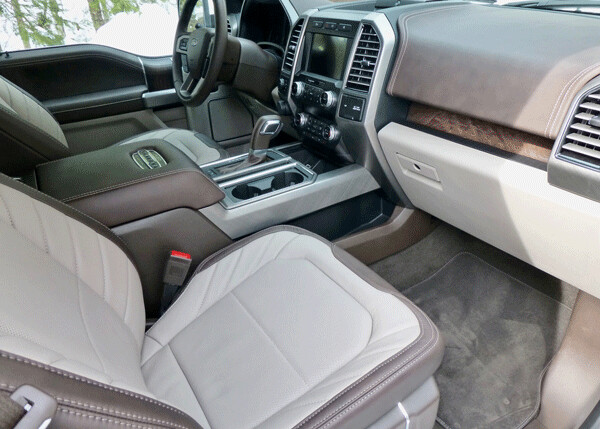

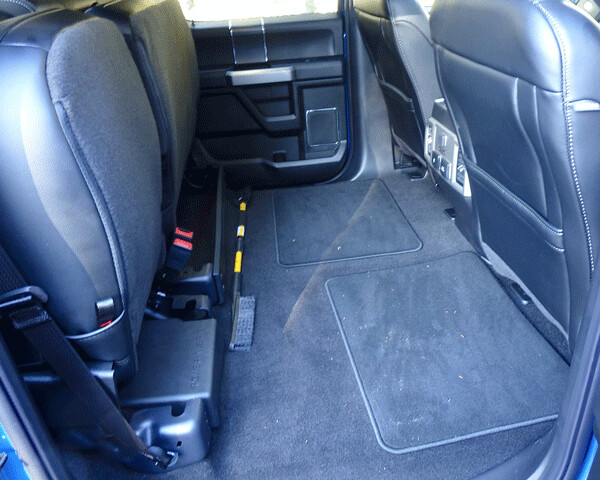
As a pushover for neat features, I liked both F-150s. And while their dimensions are the same, the white one has “Platinum” in bold lettering, fore and aft, and it feels like it’s bigger and bolder.
The Blue one, on the other hand, feels lighter and more agile and its quickness is quite similar, but it does gert significantly better fuel economy. The EPA estimates show th 3.5 EcoBoost at 17 city/21 highway and 19 miles per gallon combined. The EPA estimate on the Blue truck’s 3.0 Turbo-Diesel is 20 city/25 highway and 22 combined.
In my driving, through the wintry streets and steep avenues of Duluth, Minnesota, I never reached 20 mpg with the 3.5, and I was almost always over 22 or 23 with the diesel. Both trucks had the 10-speed automatic.
The difficulty was in getting a good estimate, because I got such good mileage that I drove it around town, then I drove it to Minneapolis and back — a round-trip of 350 miles — and still had over a quarter of a tank.
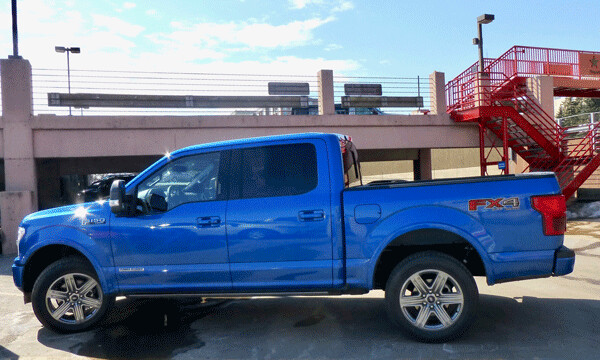
The handling of the Blue one might have felt more agile because it had 20-inch alloy wheels and the FX4 off-road package’s gas shocks and skid plates and more rugged flexibility. The White one, with silver “Platinum” lettered across the hood, had 22-inch alloys and more luxury fixtures than sporty ones.
Both of the F-150s had the clever and useful tailgate device, which pops a step out from the top of the tailgate and also a grab-stick for ease in entering or exiting the bed.
Both also were full crew cab bodies, with amazingly roomy interiors, and all the safety features, such as cross-traffic alert,pre-collision assist, backup assist.
So we’ve come to this. It’s difficult to be objective and select one truck company over another, but it’s an even greater chore to pick one company and then have to decide among five different engines and sporty or luxurious, when the sporty one is plenty luxurious, and the luxury model is, well, containing more luxury.
But don’t overlook the 3.0 Turbo-Diesel V6. It may lack the outright muscle of the biggest EcoBoost when towing, but almost all the time pickup drivers are not towing heavy trailers, and when they do, I don’t see them drag-racing a lot.
| Tweet |


